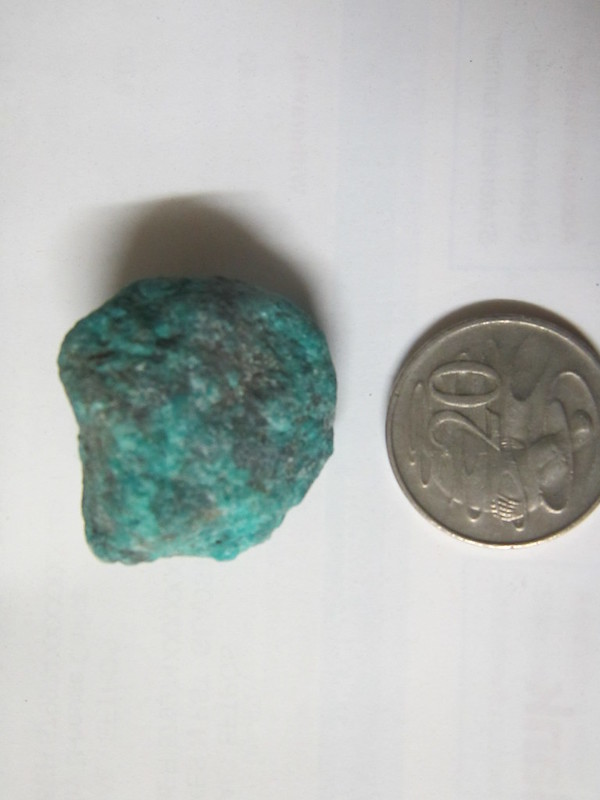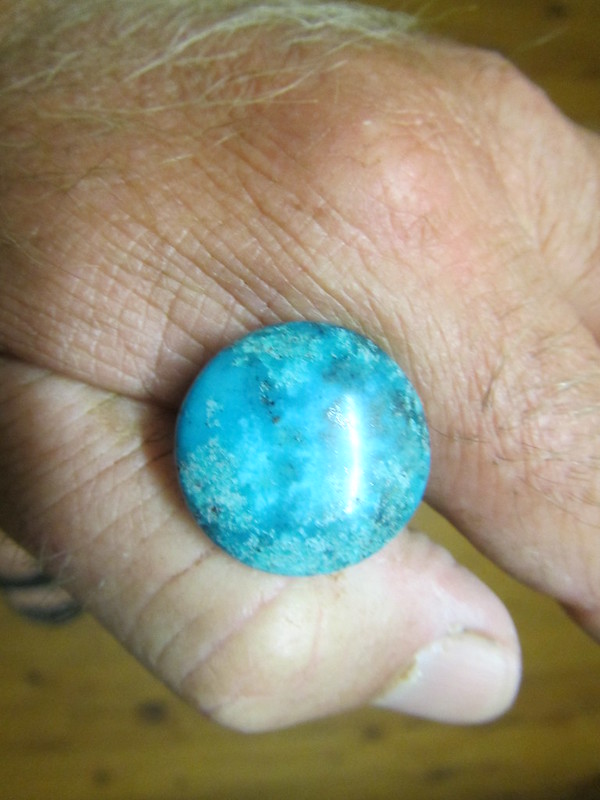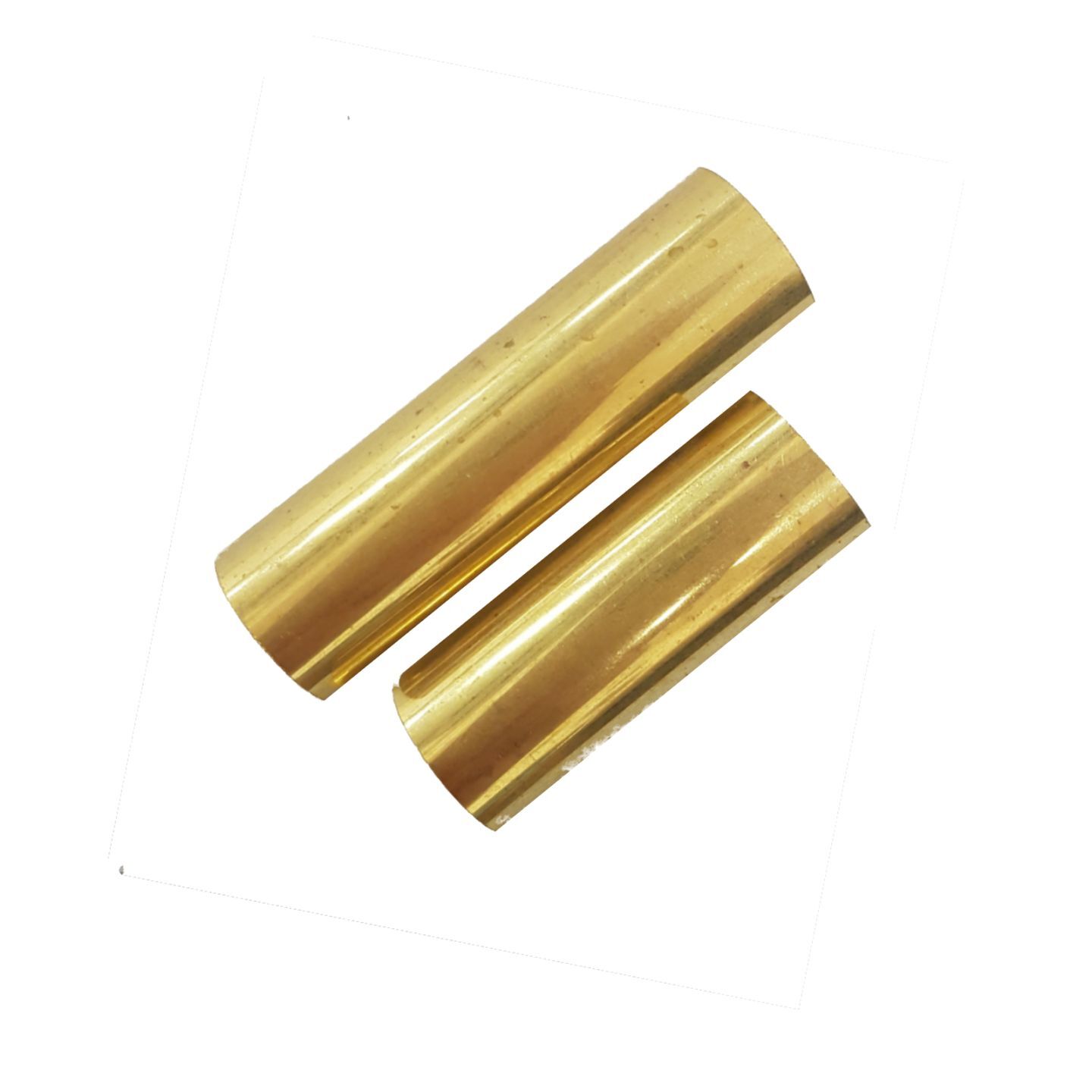- Joined
- May 1, 2014
- Messages
- 1,958
- Reaction score
- 2,530
First attempt at cabbing turquoise. This was the original bit...

It looks nice enough cabbed...


But closer examination shows it has plenty of tiny pits in the surface. I tried polishing with tin oxide after 1200 wet/dry but it undercut pretty badly. Went to the finest bit of paper I have which is 2000 and it took on a dull shine. If I could get about 8000 grit paper it would probably put a satisfactory polish on it. I doubt the stuff would ever take on a highly reflective finish.
Anyone have any tips for working with this material?

It looks nice enough cabbed...


But closer examination shows it has plenty of tiny pits in the surface. I tried polishing with tin oxide after 1200 wet/dry but it undercut pretty badly. Went to the finest bit of paper I have which is 2000 and it took on a dull shine. If I could get about 8000 grit paper it would probably put a satisfactory polish on it. I doubt the stuff would ever take on a highly reflective finish.
Anyone have any tips for working with this material?




